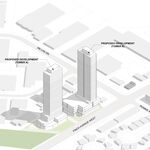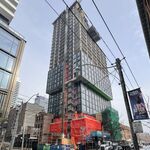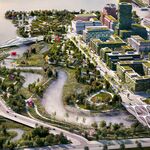By the time the giant green ribbon was cut and the photo ops done away with, the revitalized green space immediately felt an established part of Toronto's urban fabric. As Saturday's ceremonies wrapped up, blankets were parked on the grass, discs and soccer balls started flying across the lawn, the playground was overcome with a flurry of kids, and the splash pad came to life in the July heat. Grange Park was open.
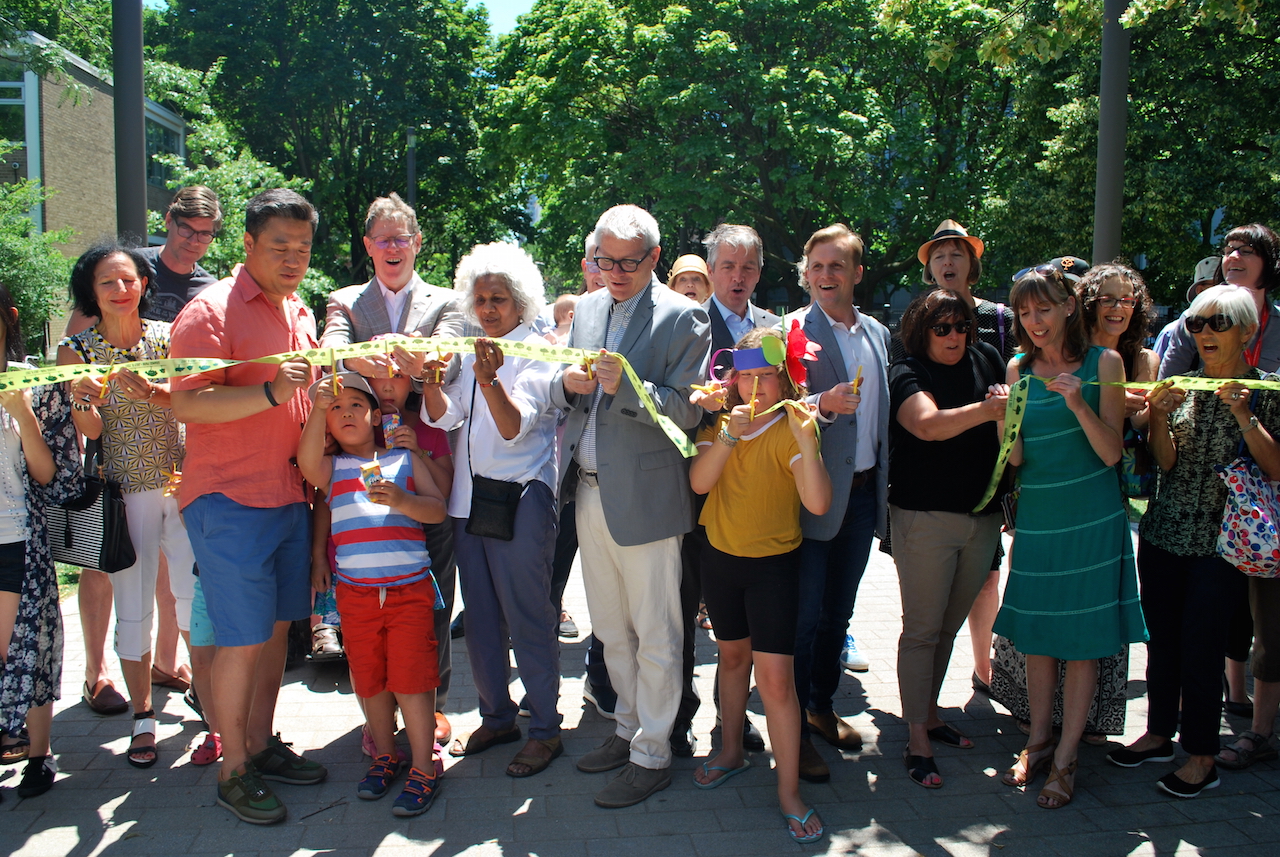 Adam Vaughan and Joe Cressy join community members in cutting the 620-foot ribbon, image by Marcus Mitanis
Adam Vaughan and Joe Cressy join community members in cutting the 620-foot ribbon, image by Marcus Mitanis
Some 15 months after the Beverley Street green space closed for extensive renovations, the park was welcomed back into the urban fold, drawing crowds of hundreds.
 Looking south from the new carriage path, image by Marcus Mitanis
Looking south from the new carriage path, image by Marcus Mitanis
Framed by the prominent south face of the Art Gallery of Ontario to the north, and OCAD U's unmistakable 'tabletop' to the east, the 2-hectare park has been retrofitted with new greenery, washrooms, enhanced public installations and outdoor furniture, an off-leash dog park, and the restored carriage path—reintroducing a design element dating back to the park's 1911 opening—that knits the space together.
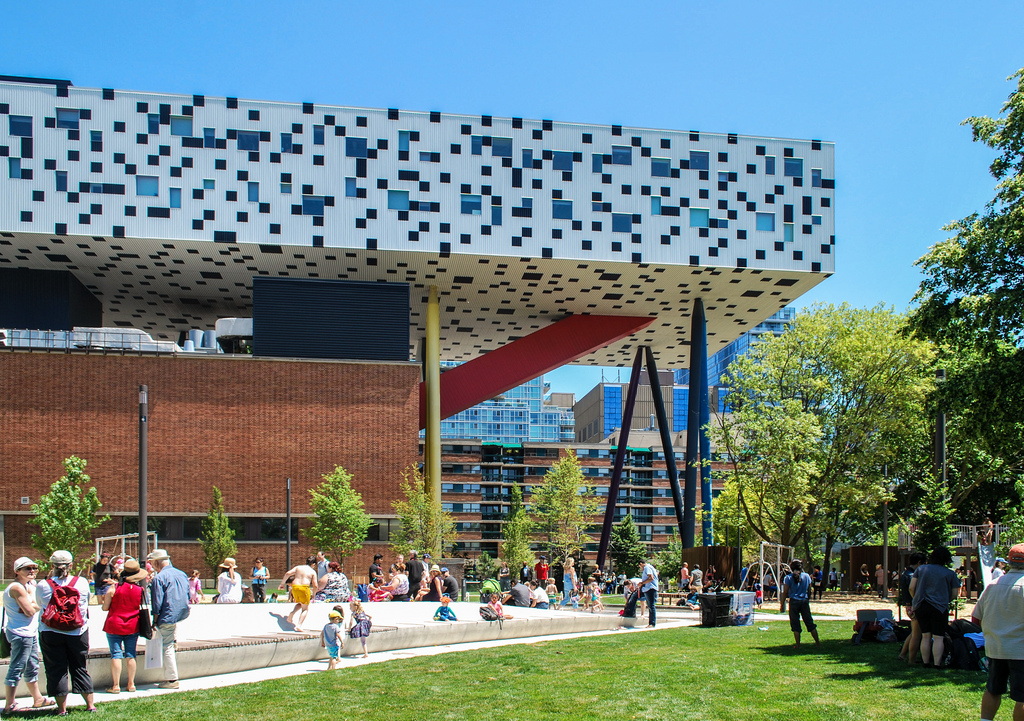 Looking east, image by Marcus Mitanis
Looking east, image by Marcus Mitanis
On either side of the central lawn, two signature elements stand out. At the west end of the park, the marquee playground—built by Earthscape—proved instantly popular on Saturday afternoon. Catering to a sense of adventure, the playground's whimsical elements are "styled to reflect the idea of an artist's studio," inviting kids to imaginatively interpret the colourful installations.
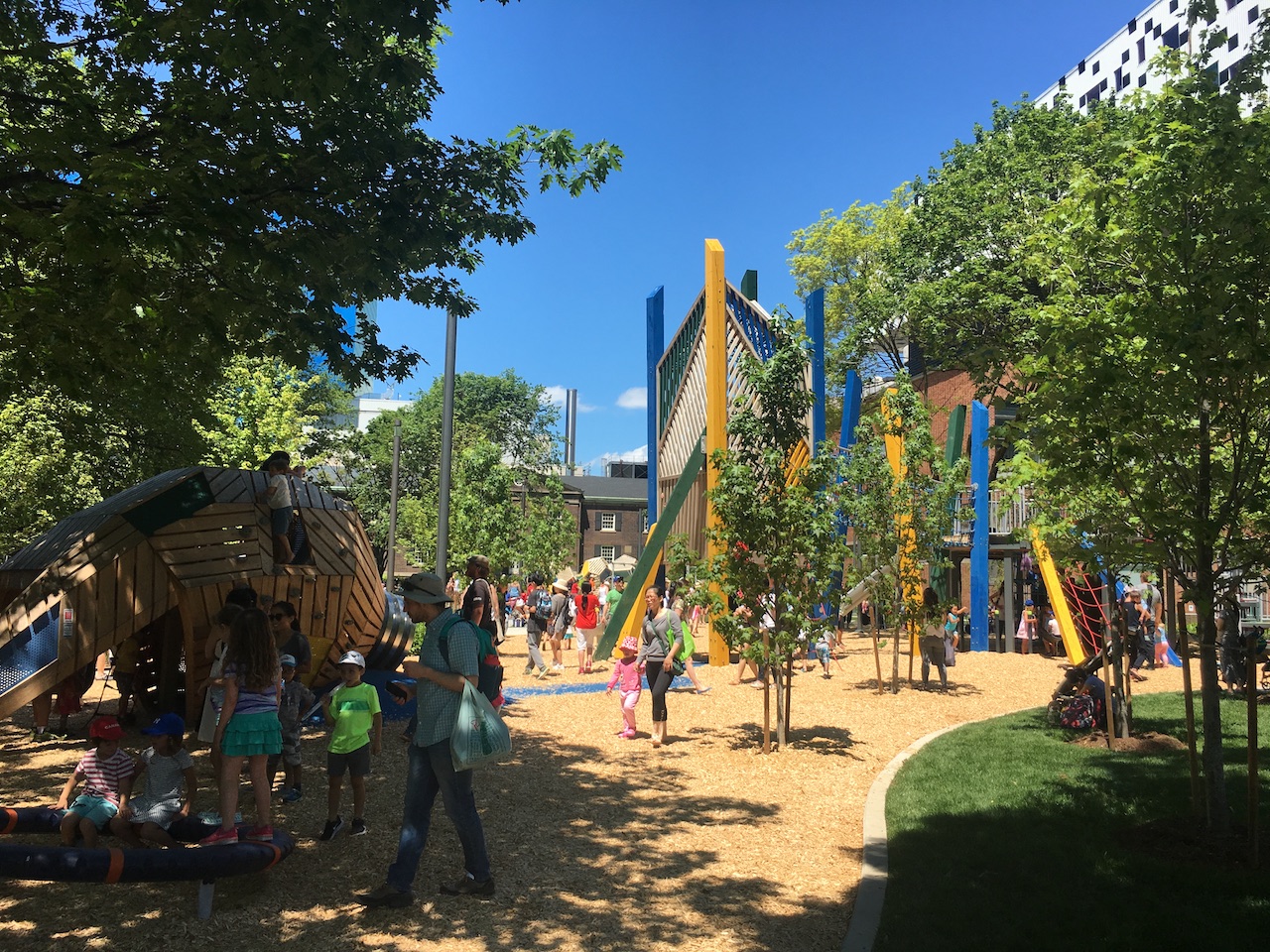 The playground, image by Stefan Novakovic
The playground, image by Stefan Novakovic
Programmed for a range of ages, a series of smaller, softer installations at the northeast corner of the playground cater to younger kids (ages 2-6), while the taller fortress—or sailboat, or spaceship—at the south end is more suitable for older children.
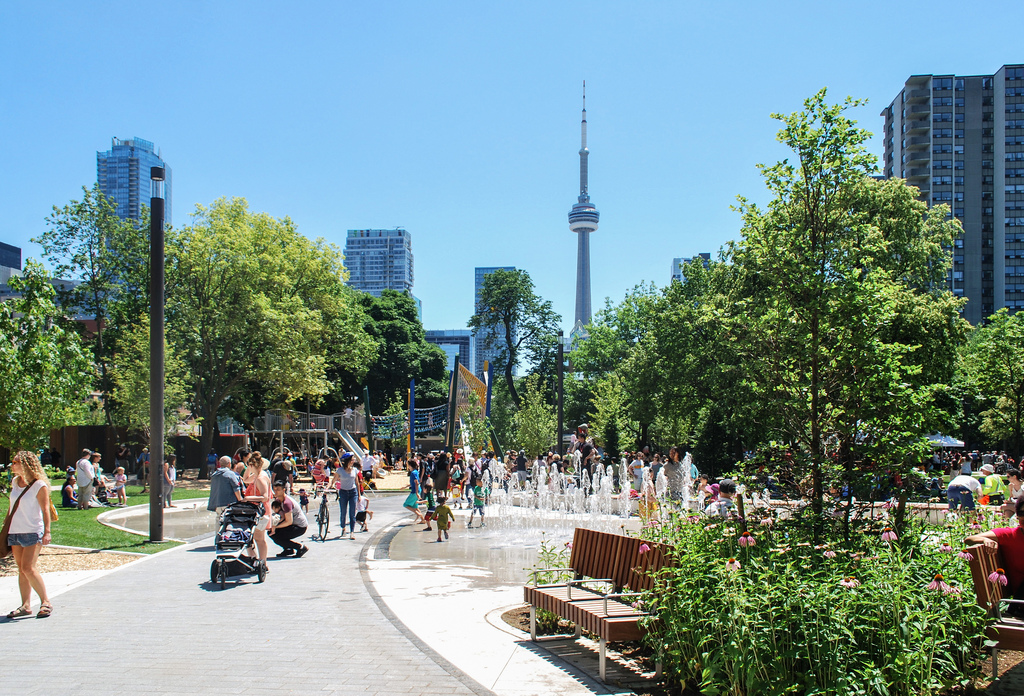 Looking south to the splash pad and playground, image by Marcus Mitanis
Looking south to the splash pad and playground, image by Marcus Mitanis
Framing the playground and splash pad, a seating area emerges from the pavement. Facilitating passive supervision, the thoughtful design element also reinforces the distinctly circular shape of the central green space to the west.
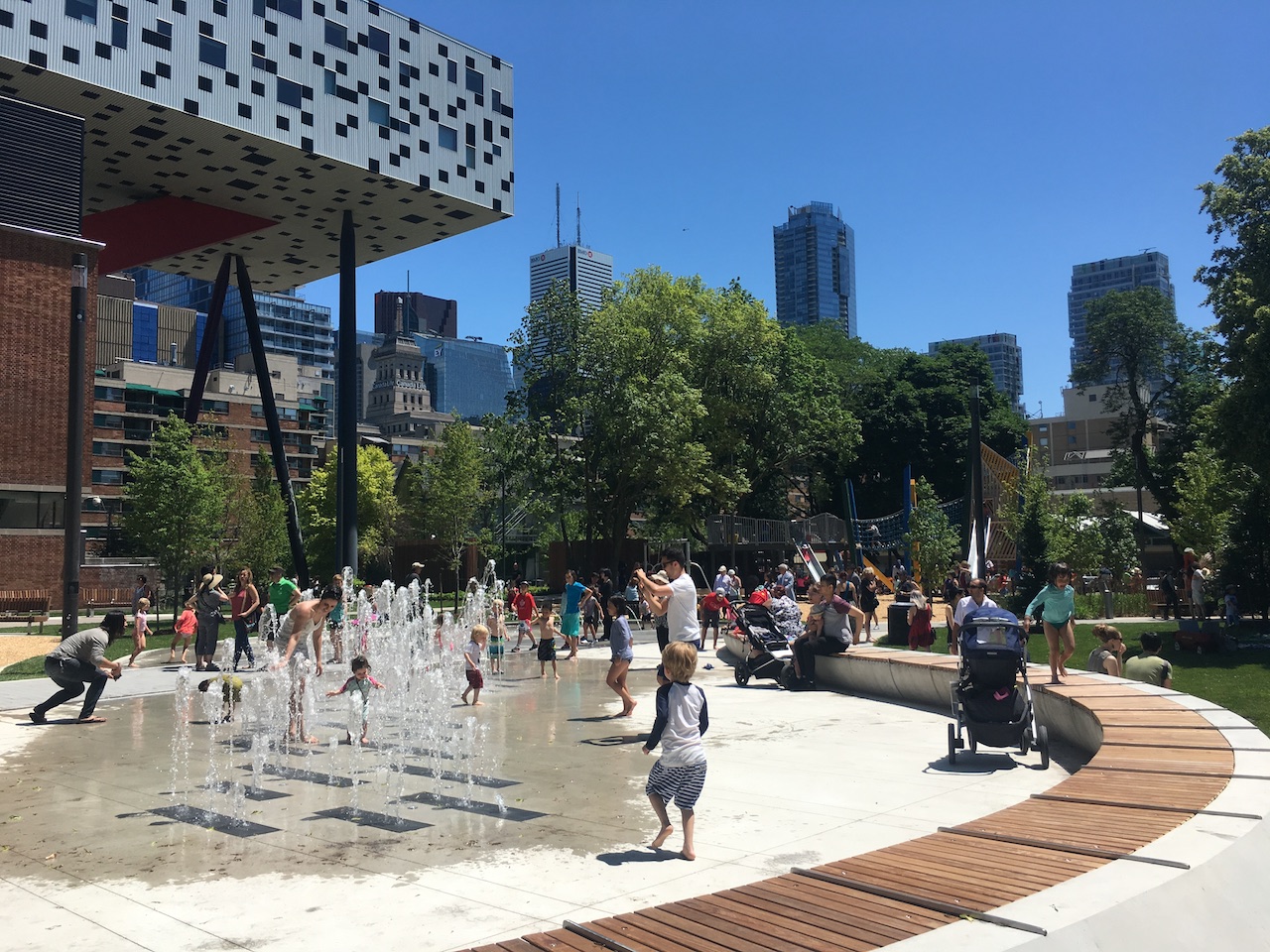 The splash pad and seating area, image by Stefan Novakovic
The splash pad and seating area, image by Stefan Novakovic
Closer to Beverley Street, the park is also the new home of Henry Moore's Large Two Forms. Long a muster point—and de facto playground—for countless of AGO school visits, the bronze statue has been moved from the southwest corner of Dundas and McCaul, where it stood for 43 years.
 Large Two Forms, image by Marcus Mitanis
Large Two Forms, image by Marcus Mitanis
Now situated at the heart of a less congested space, the sculpture is arguably allowed more prominence, though the move has not been universally well received.
 Looking east, image by Marcus Mitanis
Looking east, image by Marcus Mitanis
Designed by PFS Studio (with Thinc Design as Executive Architects), the new park also introduces some 60 trees, a series of walking paths, a dog run, and a central paved gathering place, as well as a water feature that fronts the park's new south entrance to the AGO.
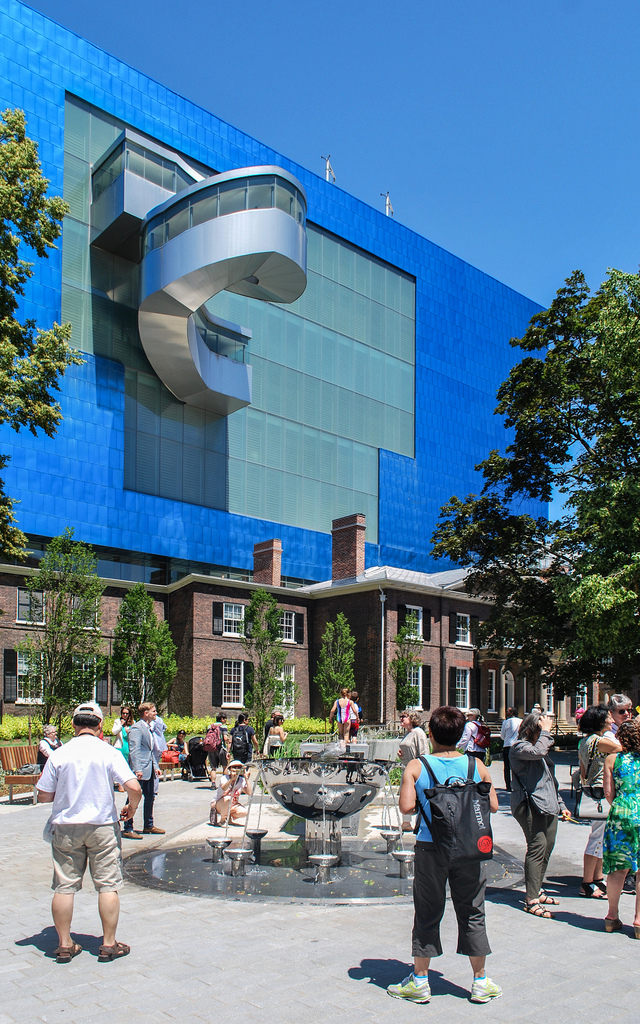 The new Weston Family fountain, image by Marcus Mitanis
The new Weston Family fountain, image by Marcus Mitanis
Jointly funded by the AGO, the City of Toronto, the Weston Family, and a variety of community groups the $15 million revitalization project has been 13 years in the making. While Toronto's public parks system generally suffers from limited maintenance funding, an endowment fund has also been set up to help ensure the park's long-term maintenance.
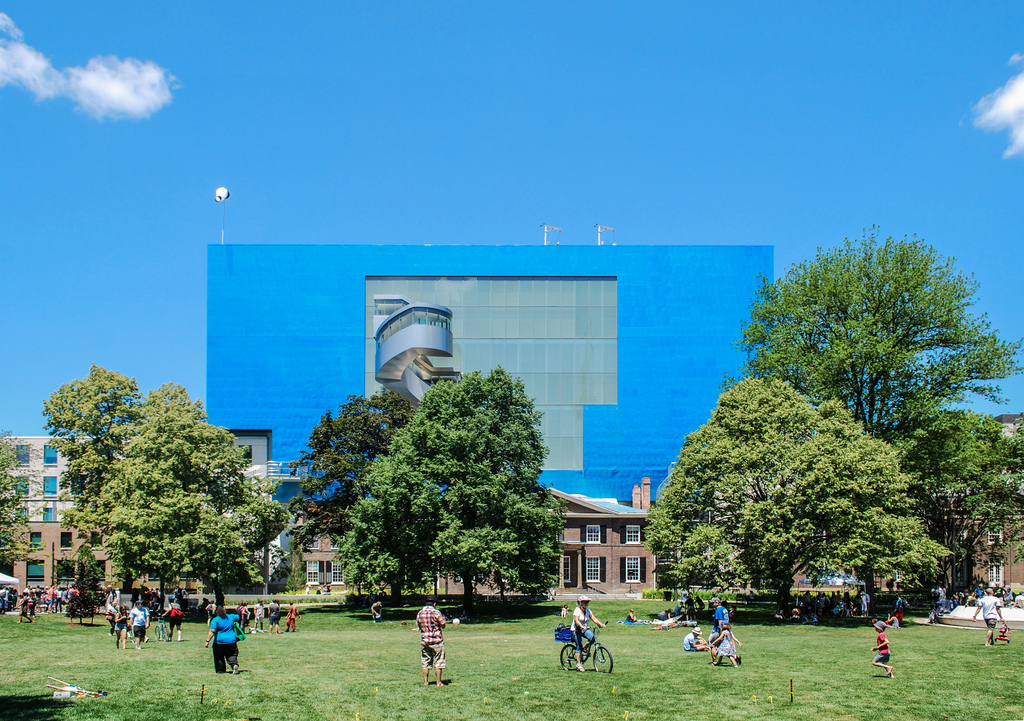 Looking north across the central lawn, image by Marcus Mitanis
Looking north across the central lawn, image by Marcus Mitanis
Since the park is owned by the AGO and operated in partnership with the City of Toronto, the more flexible funding and maintenance model—and even the choice of street furniture and garbage cans—differs somewhat from Toronto's other public parks, which generally do not receive private and institutional support.
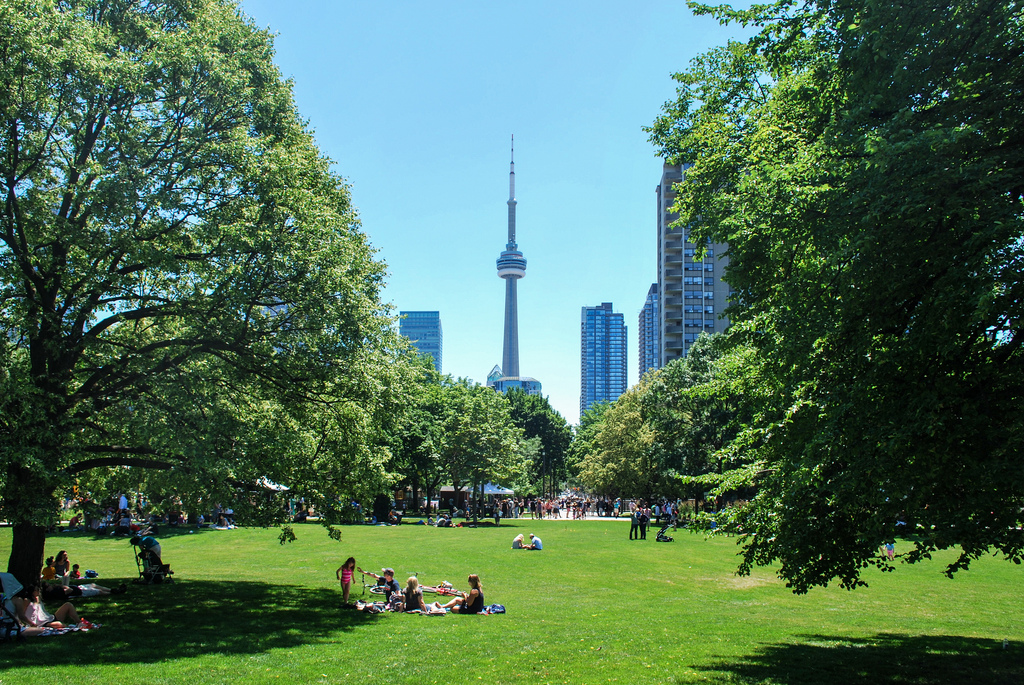 Looking south, image by Marcus Mitanis
Looking south, image by Marcus Mitanis
Opening within weeks of Berczy Park and Trillium Park, the new Grange Park is another impressive entry in Toronto's catalogue of new public spaces. Although the three parks differ in scale and programming—Berczy is a compact urban park, Trillium is primarily a walking/cycling trail, while Grange is a larger and more complete urban "third place"—the spaces share a high-quality public realm, evidencing a promising evolution in Toronto's approach to creating new communal spaces.
***
More information about Grange Park is available in our Database file, linked below, as well as the park's website, which was established by the Grange Park Advisory Committee (GPAC). Want to share your thoughts? Leave a comment on this page, or join the ongoing conversation in our associated Forum thread.

 4.5K
4.5K 






















